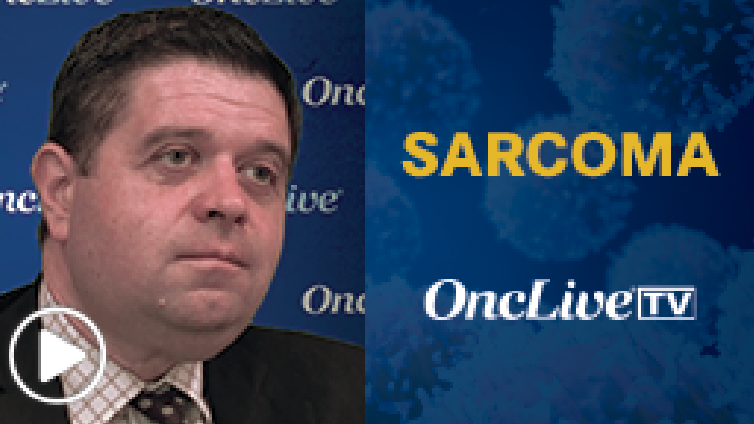Cancer and neoplasms
Dr Van Tine on the SPEARHEAD-1 Trial of Afami-Cel in Advanced Synovial Sarcoma
Brian A. Van Tine, MD, PhD, professor, Department of Medicine, Division of Oncology, Medical Oncology, Department of Pediatrics, Washington University School of Medicine in St. Louis, discusses findings from the overall survival (OS) analysis of the phase 2 SPEARHEAD-1 trial (NCT04044768) in patients with advanced synovial sarcoma.
The ongoing SPEARHEAD-1 trial is investigating the T-cell therapy afamitresgene autoleucel (afami-cel) in pretreated patients with advanced or metastatic synovial sarcoma or myxoid/round cell liposarcoma. At a median follow-up of 27.8 months (range, 16-38), the median progression-free survival in the synovial sarcoma cohorts was 3.8 months (95% CI, 2.8-6.4) by independent review and 4.1 months (95% CI, 2.8-6.9) by investigator review.
The median OS was 16.9 months, with 45% of patients censored at the data cutoff date of March 29, 2023. The 12-month and 24-month expected OS rates were 60% (95% CI, 47%-76%) and 40% (95% CI, 29%-59%), respectively. Additionally, the median OS in the 17 patients with a RECIST v1.1 response per independent review was not reached (95% CI, 15.41 months-not evaluable [NE]), and the 12-month and 24-month expected OS rates were 90% (95% CI, 65%-99%) and 70% (95% CI, 43%-87%), respectively. Furthermore, the median duration of response by independent review in the responders was 11.6 months (95% CI, 4.44-NE).
Mature findings from SPEARHEAD-1 may support the FDA approval of afami-cel for patients with advanced synovial sarcoma, Van Tine says, provided that response rates continue to increase and no new safety signals are identified.
Afami-cel treatment includes a conditioning regimen with fludarabine and cyclophosphamide, which is associated with immunosuppression in the form of decreased platelets, white blood cells, and red blood cells, Van Tine explains. In addition, afami-cel is associated with cytokine release syndrome, which must be monitored for and treated in an inpatient setting, Van Tine emphasizes. Aside from these adverse effects, the SPEARHEAD-1 investigators have observed no long-term safety signals that persist beyond the trial’s treatment window, Van Tine concludes.

